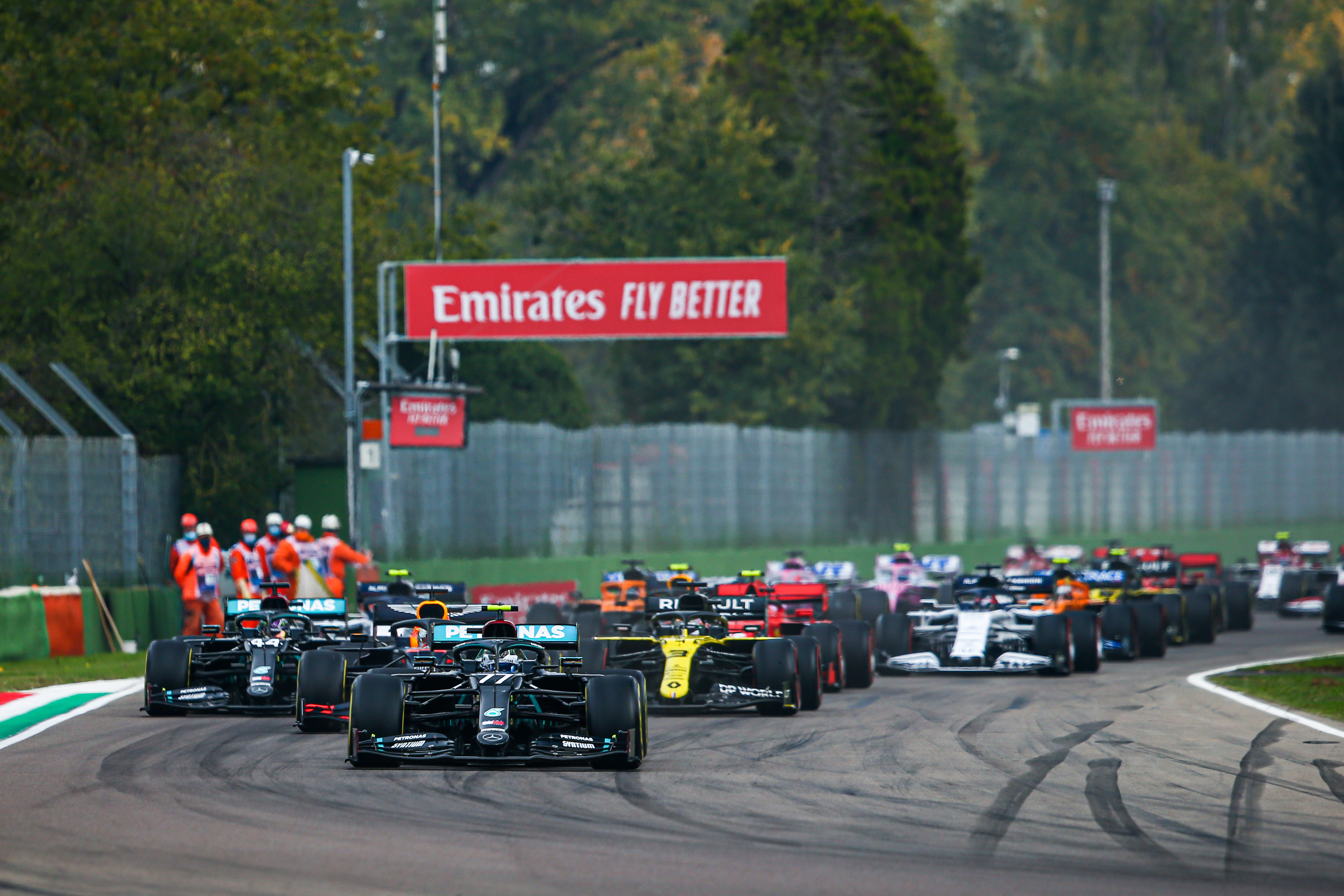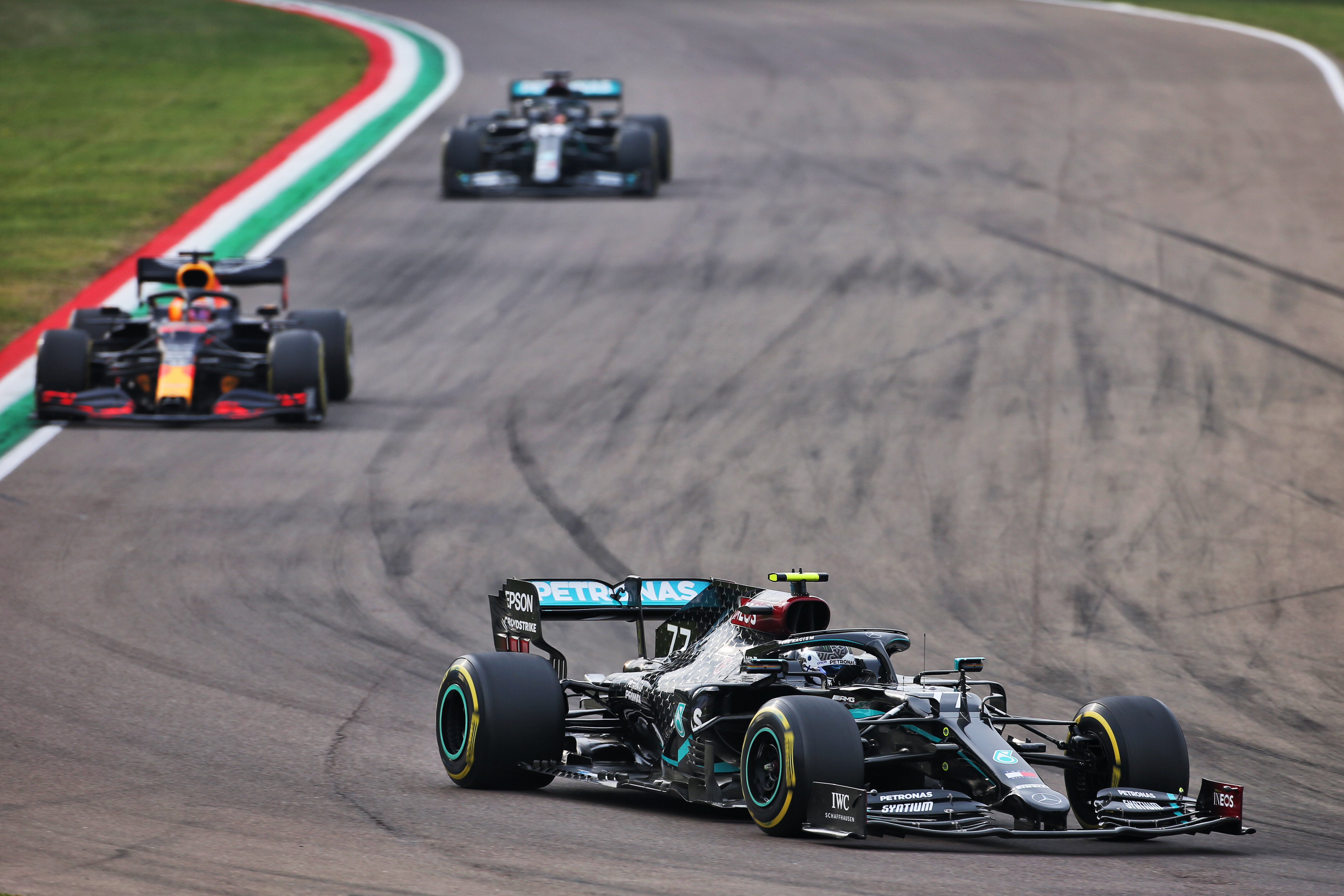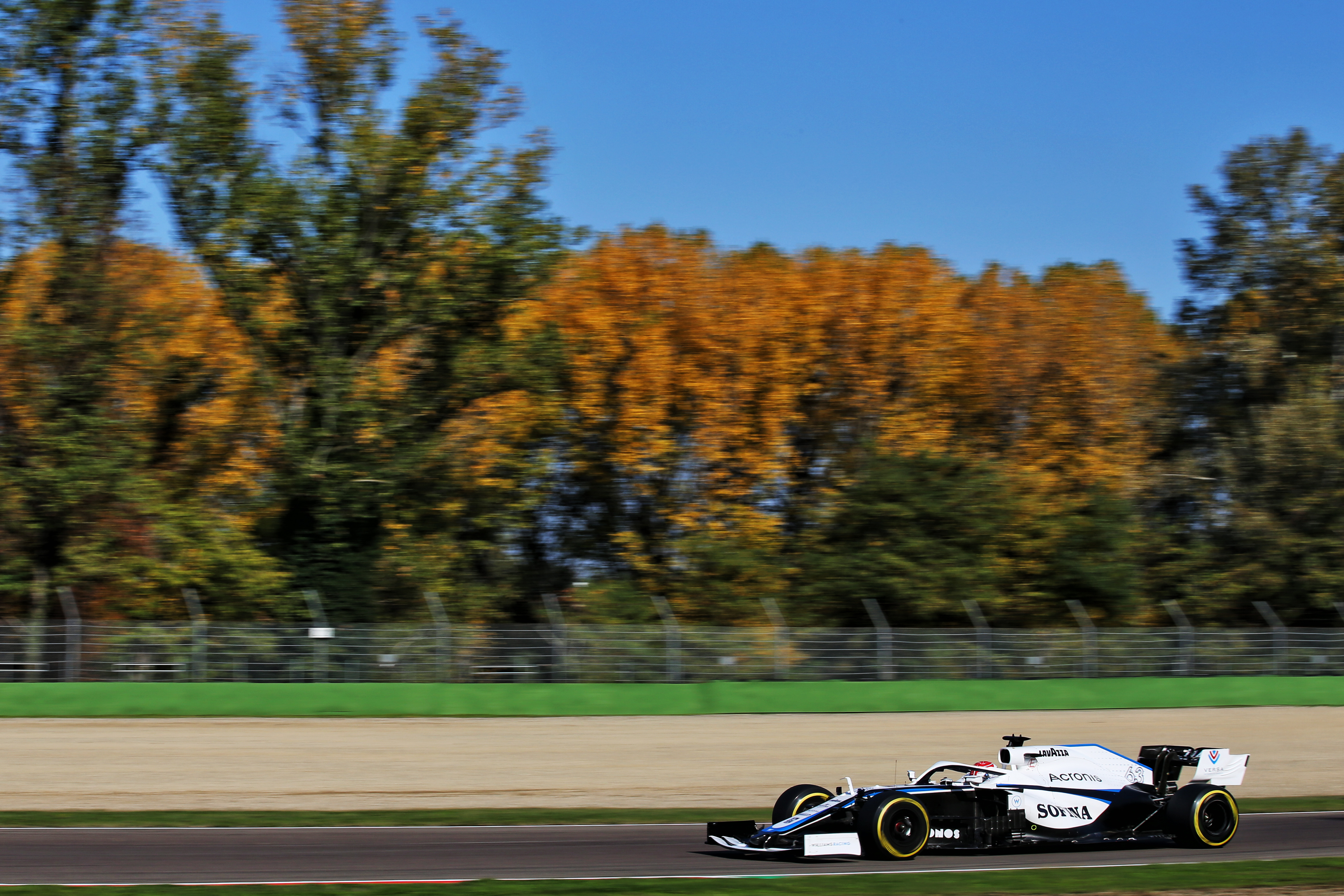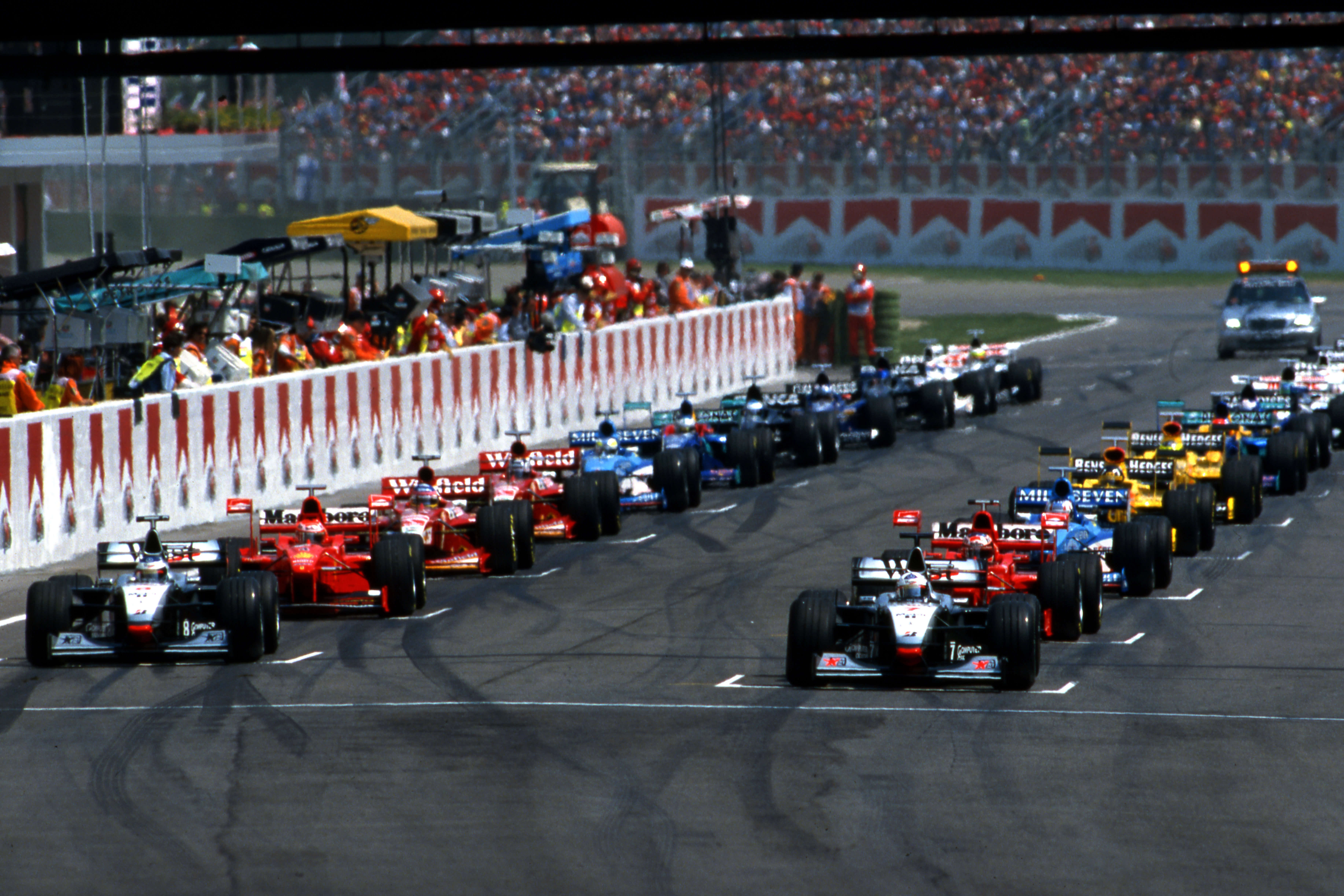Up Next

Imola was the last of the truly old-school additions to the 2020 Formula 1 calendar (Istanbul being a 21st-century track), and driver reaction suggested it was the most popular so far.
Our writers give their takes on what the track brought to the calendar, and also the elements where it wasn’t ideally compatible with 2020 F1.
EDD STRAW
F1 HAS TO SEE IT BELONGS AT IMOLA
 Formula 1 was absent from Imola for 14 years, but last weekend it felt like it had never been away.
Formula 1 was absent from Imola for 14 years, but last weekend it felt like it had never been away.
Grand prix racing belongs at Imola, a circuit that oozes history despite being a relative newcomer compared to Monza and, for all its modernisation and changes over the years, it has an infectious old-world feel.
It’s a part of Italy that’s steeped in motorsport. Modena, birthplace of Ferrari, is only an hour up the road, AlphaTauri is based just a few miles away and the monument to the legendary Ayrton Senna is a reminder that the history is bad as well as good.
But heritage only gets you so far and it’s also a fantastic venue for F1.
The late call not to allow fans to attend made Imola feel like a ghost town, but to see the tifosi in their natural habitat twice a year is something F1 should aspire to. The circuit itself isn’t great for overtaking but the fact today’s enormous cars have almost outgrown the track makes it all the more challenging.
It’s not just the lack of runoff and the topography that enlivens this track, but also the imperfect geometry of many of the corners. And while many lament the Tamburello and Villeneuve chicanes, they are quick and reward drivers who attack them. These aren’t stop/start, they are a genuine challenge.
But above all it’s the location that is special. Monza is walled off in a royal park outside Milan and that makes for a beautiful venue. But the Imola track is in the town and even has private houses within the track!
F1’s behind-closed-doors return was a joy. It’s difficult to know where the money for a regular race will come from, so a continuing stand-in role next year is its best hope, but the value to F1 can be measured by more than cold, hard cash.
So let’s hope F1 sorts out a deal and sorts out the track limits to make this more than a glorious one-off.
SCOTT MITCHELL
CHALLENGING TRACK DESIGNS DON’T EQUAL BAD RACING
 Until Lewis Hamilton jumped ahead and won at a canter, I was actually enjoying the tense nature of the San Marino- sorry, the Emilia Romagna Grand Prix.
Until Lewis Hamilton jumped ahead and won at a canter, I was actually enjoying the tense nature of the San Marino- sorry, the Emilia Romagna Grand Prix.
It looked like a proper race at the front with three cars in close proximity, the leader being hounded and strategy coming into play.
The drag reduction system was also doing its job for once, not enabling easy drive-by passes but – when a driver got close enough – just about providing enough to let drivers go aggressive into the braking zone.
Tamburello’s not a huge stop but at least it allowed a few drivers to be opportunistic, including a pass for second.
It’s not Imola’s fault that the only reason the leaders were so closely matched is because F1’s got such a baked-in competitive order, or that F1 cars are so big they seemed to dwarf parts of the track.
If we have more cars closer together, we can have more close-run affairs like the opening stint. If we have sensible DRS zones we can give drivers the chance to pass without making it an inevitability. If we have slightly smaller, slightly less aero-sensitive cars they will follow and race more even on a track like this.
And if we keep tracks like Imola, we punish drivers for mistakes and make it a real test, not a race around a car park.
Like Algarve and Mugello, Imola demands F1 to embrace more challenging track designs. Slightly smaller, slightly less aero-sensitive cars will work very nicely on them.
MARK HUGHES
A REMINDER OF WHAT’S BEEN LOST
 The big monster of downforce and power that is a modern hybrid F1 car dwarfed this legendary circuit.
The big monster of downforce and power that is a modern hybrid F1 car dwarfed this legendary circuit.
“It’s just incredible the speeds we are going through some of these corners,” said Hamilton. “They are like fighter planes around here.”
This was never more true than at the Tamburello left-right-left sequence, fifth gear for what ostensibly looks like a chicane, quickly followed by the Villeneuve chicane – entered in seventh gear with a couple of downchanges for the second part.
If you’re familiar with the contours of Acqua Minerale at the bottom of the hill mid-way through the lap, it doesn’t seem feasible that they are going through the first part of that in seventh gear at not much short of 180mph. The driver skill looked more like guiding a missile than driving a car.
“It’s visually hard to register what is happening and to keep up,” said Lando Norris. “You turn in and hope for the best.”
This for sure played its part in the difficulty some were having with track limits – particularly those defined by a painted line rather than a kerb – as they first took to the circuit in the single practice session, Saturday morning.
“At the speeds we’re going, it’s very difficult to pick out where the white line is,” said Carlos Sainz Jr. “The kerb is much easier to see. But really I’d prefer gravel rather than having the FIA check whether we’re staying within the lines or not.”
The gravel beds that are there found favour.
“The exit of Turn 6 [Tosa] is just gravel so there’s no chance to run off,” Norris said. “I went off there a couple of times just dipping a wheel into the gravel and that’s punishing enough.
“Ideally we’d have it like that or the last corner where it’s just gravel and if you go off you go off and it’s kind of game over.”
If the pandemic has brought anything worthwhile to F1, it’s the old-school tracks’ reminder of what has been lost in recent years.
Read Mark Hughes’ full in-depth review of the Imola race weekend
MATT BEER
FAMILIAR VENUES CAN BENEFIT FROM A NEW CONTEXT
 It might seem unlikely now, but there was a time when F1 expanding into new horizons wasn’t viewed with suspicion at the prospect of anonymous ‘Tilkedromes’ in nations with no motorsport heritage usurping classic European heartland tracks.
It might seem unlikely now, but there was a time when F1 expanding into new horizons wasn’t viewed with suspicion at the prospect of anonymous ‘Tilkedromes’ in nations with no motorsport heritage usurping classic European heartland tracks.
Instead there was hope that brand new venues might enliven a calendar where so many tracks had been tightened and slowed after the 1994 tragedies, and where F1 often seemed to be all about chicanes, 75mph second-gear corners and races decided in pitstops. Back then, it wasn’t so long ago that the likes of the original Osterreichring, Zandvoort and Kyalami layouts had been lost, after all.
Not everyone liked to see Italy ‘hogging’ two slots on the calendar in that era either, which didn’t help Imola’s reputation. Plus of course for many it was always going to be the circuit where Senna and Ratzenberger were lost, or where Villeneuve was betrayed, or where Piquet and Berger were lucky to escape horrendous crashes.
As a teenage fan, I was definitely in the ‘refreshing new tracks, please’ camp. And to me Imola’s regular slot as the start of the European season meant I often saw it as the track where a championship would get mundane as, after some early-season flyaway madness in tricky conditions with unproven cars, that year’s dominant package asserted its authority. Like so many memories, that feeling bears little relation to the actual stats of who won at Imola and who won the flyaways in those days, but I’m sure I wasn’t the only one who had a strong perception that if a promising F1 season was going to get dull, it would do so around Imola/Barcelona time.
But now those Imola chicanes that were so mundane with 1990s cars are a high-speed thrill (the removal of the final one didn’t hurt either), turning a track where the Piratella/Acque Minerali combo felt like the only highlight into a real challenge again. Imola in the autumn, in a Tilke era, with the days of the flat-out Tamburello/Villeneuve layout far away in another world, felt like a refreshing treat in itself.
ALICE POWELL
ATMOSPHERE IS EVERYTHING
 I was at Imola coaching 17-year-old British driver Abbi Pulling, who performed well on her debut in the Formula Renault Eurocup.
I was at Imola coaching 17-year-old British driver Abbi Pulling, who performed well on her debut in the Formula Renault Eurocup.
I was very jealous that I didn’t get to drive the circuit, having walked the track and seen the memorials to Ayrton Senna and Roland Ratzenberger. It is such a shame that the fans couldn’t attend, but the atmosphere was buzzing nonetheless as they were outside the circuit in good numbers, cheering and waving flags and trying to get a glimpse of their heroes through the fencing.
For that reason, I hope it is not too long before F1 returns to Imola. Some drivers said the race would be a bit of a procession and it was, but the virtual safety car largely took the sting out of it and I wonder if we would be blaming the circuits quite so much if we had six cars, or more, fighting for the win.
Imola oozes history and attracts passionate fans in numbers. This year has shown how precious those things are.
Read W Series racer Alice Powell’s full column on the Imola weekend





